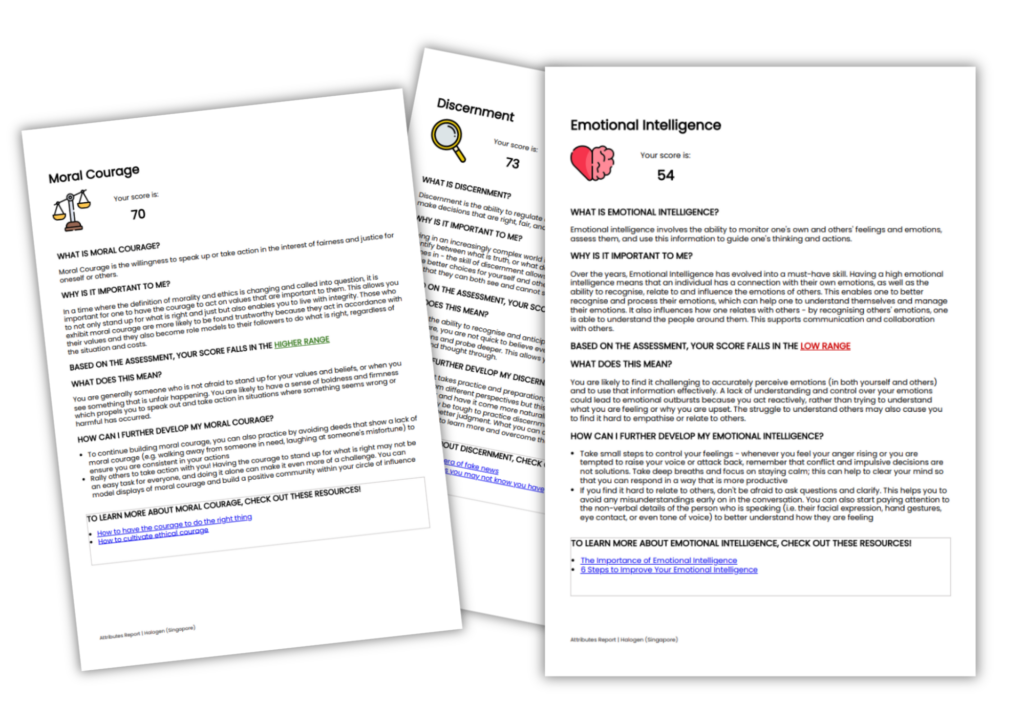To put it bluntly, marketing would not exist without copywriting. Any marketing campaign that is worth its weight features masterful copy. That’s why we’ve reached out to expert wordsmiths and compiled their insights and advice when it comes to writing the best piece in the business.
In this article:
The basics of copywriting in marketing
12 Copywriters share their tips on how to write copy that converts:
1. Inject humor into your writing
2. Start with “casual research”
5. Start with a conclusion, prove it with a story
7. Narrate a compelling and relatable story
9. Write a headline that scores high on empathy
10. Use your target audience’s vocabulary
The basics of copywriting in marketing
Copywriting is so much more than writing well—it’s more about writing strategically. Any successful marketing or advertising strategy must include thoughtful copywriting. It’s what captures the attention of your audience, makes them remember your brand and eventually convinces them to give your business a chance. Copy also helps your audience better understand who you are as a business, including your history, mission, goals and beliefs. Most importantly, it shares how your business can help your readers.
In business writing, it’s important to plan out how to make your writing more direct and effective. If you’re one of the many people in business for whom writing has never been a major concern, you probably know that a lack of writing skills is a greater and greater handicap with every passing year. That’s why it’s smart to ask for help from writing experts.
Why is copywriting important for marketing?
If done well, copywriting will increase brand awareness and customer loyalty. It helps potential customers slide their way through the sales funnel and into your shopping car (or equivalent depending on your business). Well-written copy will not only increase traffic to your website, it’ll convert potential customers into leads and finally into actual customers.
Incorporating copywriting in your marketing strategy
- Think about your audience – What are their needs and desires? How is your service or product going to help them? The best copywriters put themselves into the perspective of their audience. What would catch their attention? What kind of copy would they find impactful, inspirational or even funny?
- Tell a story – Even the shortest copy needs to tell a story. Humans are captivated by a good tale, no matter how long or short it is. Especially with today’s savvy consumers, you need to use your copy to connect your audience to your service or product, and nothing connects people like a fascinating story. In this digital age, harnessing the power of AI essay writers can help craft compelling narratives efficiently, allowing businesses to engage their audience with stories that resonate, whether it’s in a brief social media post or a comprehensive blog article.
- Don’t forget the basics – While copywriting is the vehicle that drives your B2B marketing strategy to its desired destination, you need to make sure you have a full gas tank. Grammar, spelling and style do matter! Even the most inspirational copy will look sloppy and reflect poorly on your marketing campaign if it isn’t proofread. You can also contact pro essay writer for help.
12 Copywriters share their insights and advice
Copywriting is obviously extremely important to business’s success. But how does one become a master wordsmith? We asked 18 copywriting gurus to share their tips. These are their answers.

1. Inject humor into your writing
Think back about what YouTube videos you’ve liked the most recently. The chances are that at least one of them was a mixture of both information that made you feel like you learned something, and entertainment: the information was laid out in a catchy way and exciting to watch.
That’s precisely how we’re writing our copy for all our email and social media marketing campaigns: telling a relatable story that happened to your team this week or one of your clients, sharing interesting insight, and so on, all filled with a good dose of humor. What happened once we’ve started to use this approach is that our customers look forward to our emails and posts every week, although we add a sales-related call to action in each one of them.

2. Start with “casual research”
Last year I started doing more long form and comprehensive articles. My tip is to do, what I call casual research, but start early. For instance in industry guides like this 6.000+ words one on e-commerce email marketing.
I started research months even before writing, every time I “ran into” something I saved it in a google doc. So…
- Save interesting blogs and sites around the topic/subtopics.
- Find and list competing articles.
- Whenever you see something interesting you could use, even if totally unrelated, save it.
This will allow you to go much deeper into a topic, make it more interesting, and it will be way more original than any other. Additionally you know who to mail to have a look during promotion phase. It also works very well if you aren’t expert in the subtopic, for instance I knew a lot about e-commerce, but not that much on email for restaurants, so keep an eye out – and you will end up with some gems.
Of course, there will be a lot of additional ideas “you can’t use”, but these will serve perfect for later updates and other pieces.

3. Understand your audience
The thing that elevates good copy into great copy is a deep understanding of your audience. If you’re trying to convert your audience into product users make use of your audience research.
Who are they? What are their main problems? How can your product fix those problems? The more
specific, the better. Too often copywriters get fixated on selling their product by listing the specifics; instead
they should take a step back and ask themselves “what does my audience actually want to know?”
Most of the time the answer is “how this product can help me” and not “what this product can do”.
Related Reading: The Importance of Personalized Content on Your Website


4. Repurpose existing content
One of my biggest copywriting tips is to create content that is relevant and topical to catch the immediate surge of traffic and interest. The crucial thing that we’re trying to do more of in 2020 is that when the surge of interest in that subject passes, not to give up on the content, but look at how we can repurpose it for a different audience.
For example, while working for a company in the Nordics, there was a lot of interest at the end of 2018 when Amazon announced their plans to move AWS into Sweden. We published an article about that, which attracted a spike in traffic that had peaked by Q1 of 2019. Instead of abandoning the article, we re-wrote and re-formatted it as a step-by-step guide for Amazon sellers now looking to get established in the Nordics.
Be current and be topical by all means, but remember to be adaptive too!
5. Start with a conclusion, prove it with a story
All my favorite tips are about neuro copywriting, its headline and intro strategies in particular. And though most copywriters have mastered the secrets of headline creation (use numbers and beneficial adjectives, appeal to FOMO, etc.), the introduction is what can sink all writing endeavors with a single strike.
We know it needs to be short (no more than eight sentences), include a hook, and keep people reading. For a long time, my favorite formula for writing intros was APP method by Brian Dean:
- A — agree (start with concept readers will agree with, to show you understand their problem),
- P — promise (give a peek to a better world),
- P — preview (tell what you have for them).
This year, I’m going to test his other method: PPB, where P is for a preview (what you have for readers), the second P is for a proof (why they need this), and B is for a bridge (a call to action, inviting to keep on reading and learn more).
As a big fan of storytelling, I would recommend this trick to create a correlation between your product/service and events that benefit it, and stir readers into a desired action through their perception of this correlation. In plain English, your content piece follows this scheme:
- Conclusion (a message) –> Story –> What is it all about? (facts)
You start your writing with a conclusion. In a preview, you already share the message you want to communicate. After that, you share a story (a proof that your message is right); and finally, you answer WIIFM (what’s in it for me?) in your content, turning it into a story with facts.

6. Read your content out loud
This is old but definitely still gold. After completing your text or an important part, read it out aloud. It may sound silly but this helped me a lot in the past.
You’ll get a better connection to your writing and find out how your words really sound. On top of that, it helps to spot grammar and style mistakes that Grammarly might have missed.
It’s definitely not a new technique but for me, it works like a charm (although you shouldn’t apply this method when working in a Starbucks).

7. Narrate a compelling and relatable story
The human brain evolved to love and remember stories. Researchers suggest that stories engage several parts of the brain, particularly areas that are related to emotions, language processing, language comprehension and visual image processing. Any surprise why messages stick more when they are encased in well-told stories?
Every great personality had great storytelling skills. William Shakespeare’s stories are still relevant in schools, theatres and cinemas. Why can’t we stop quoting Confucius, Plato and other great storytellers?
Storytelling remains the surest way to capture prospects’ attention and get them to remember all about the product. In your next ad, tell a relatable story that engages the audiences’ emotions and wins their trust. That way, you’ll win loyal customers and brand ambassadors.

8. Block out all distractions
When I start to write, I try to get into a focus mode. In sum, this means avoiding distraction at all cost and maximizing creativity. In detail, I would:
- Clean my desk before starting to write.
- Snooze all notifications (Email, Slack, …).
- Close all other tabs in Chrome.
- Use an editor that doesn’t distract, like Hemingway.
- Use a Pomodoro timer Chrome extension to work in chunks of 25 minutes.
This helps me concentrate on my text and avoid any potential distractions that could impact my writing. This way, I’m highly productive although it didn’t work all the time. Sometimes, I still get distracted but it definitely helped me get better.

9. Write a headline that scores high on empathy
Your content gets buried if the headline lacks specificity. Make the headline accurately beneficial to your readers so that they feel invited and understood.
If your audience doesn’t see an incentive in your content, they bounce off your page. And that is why it’s crucial to bring empathy into your copywriting to increase its specificity, utility and relevance. When you address your audience’s biggest concerns in your copy and map it to the outcome of your solution, you are earning their trust and positioning your brand as dependable.
3 easy ways to write a headline that scores high on empathy:
- Bust a big objection by clearing their biggest block/challenge
- Include VoC data excerpts to write a highly relevant headline
- Mention one motivating factor that inspires and draws the reader into the content

10. Use your target audience’s vocabulary
Before writing content, I research the language of my target group. For example, if they hang out in specific Facebook groups or Subreddits, I’d go there and read their thoughts and try to understand how they talk and argue.
Furthermore, I would note the powerful and interesting words they use. To me, it’s a bit like keyword research because I’ll try to incorporate these keywords into my copy as naturally as possible. When your target group reads your content, they’ll be far more likely to resonate with it if you’re using their language and style.
Related Reading: 8 Tips For Writing Conversational Emails That Boost Your Email Marketing Campaigns

11. Write concisely and get to the point
The “hook, buildup, and payoff” is the best content structure possible, but your hook should also provide some payoff in advance. It is nice to engage users with storytelling, but it is always better to start with something tangible and relevant. The very first sentences of your copy should make your readers realize what they will miss if they don’t keep reading.
I use this technique all the time. In this blog article about WordPress chat plugins, the lead and the opening paragraph are almost the same because I care about accomplishing two things. First of all, I need to make my writing relatable. My readers encounter obstacles and I need to identify with their problems (in this example, they are searching for the right plugin). Secondly, I need to give them something of value right away (here, it is the promise to help them find the best solution).
Articles that are more straightforward and make things clear from the beginning convert far better than ones that focus on storytelling and the buildup phase too much.

12. Optimize your content for SEO
If one of your copywriting goals is to capture more traffic, then you absolutely must consider SEO. But optimizing your content isn’t just good for search engines, it’s also great for user experience.
Think about it, when you Google a phrase, you’re more likely to click on the search result that contains that phrase in the page title and meta description. Beyond that, optimized content strengthens overall topical relevance, ensures complete depth of coverage, keeps content aligned with search intent and provides clear, actionable next steps.
Here are some of the top tips from our advanced SEO copywriting guide:
- Optimize page titles, headings and subheads.
- Find the right keyword density.
- Cover the topic as thoroughly as your competitors do, but don’t overdo it.
- Make sure your text is concise and readable.
- Add internal links to convey relevance and provide users with more information.
Additional resources
Take your marketing strategy to the next level with marketing survey templates from Pointerpro.






